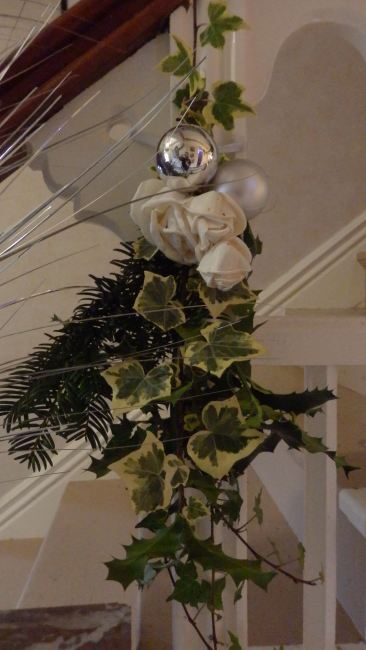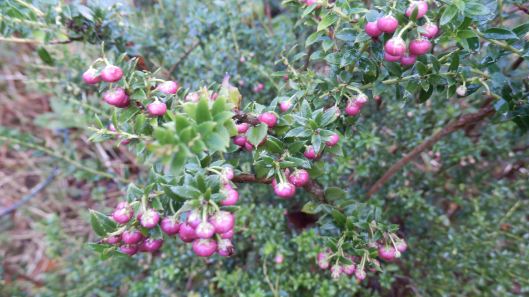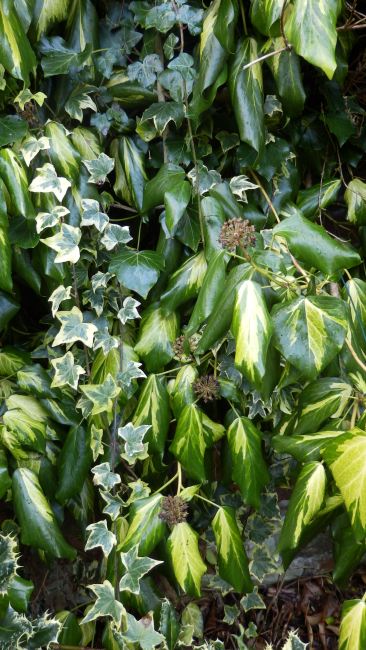Tags
The only point of walls, fences and other partitions is to test your relationship with your neighbours. In England we suffer from an excess of weather designed for the sole purpose of barrier destruction. Wood rots in the ever present rain, stone and brick blow about in the seasonal gales like leaves on a breeze. Hedges are seen off by small children who see them as unreasonable obstructions to their rights of navigation and exploration. When the structure falls over into your garden or theirs, you can warm yourselves with heated discussions as to who will make repairs. Might as well grow some ivy to soften uncompromising situations and provide some winter colour.

Ivy, holly and yew decoration
Hedera is an ancient symbol of friendship, fidelity and loyalty, probably in reference to its sticking power. Stems are self clinging by means of aerial roots, which penetrate the support and can cause damage to mortar. The jury is out as to whether it damages trees upon which it grows; it certainly steals light, water and nutrients, so I wouldn’t recommend the practice. I don’t allow climbers to sink their teeth into my house; a cottage nearby has all but disappeared under a cloud of H. helix (common ivy) and the windows peer out of the greenery as if the building is short sighted.

Pernettya (prickly heath) berries
The plant is described as moderately poisonous but then so are some people of my acquaintance. Many garden specimens will upset the adventurous, who decide to dine on them; Aconite or Phytolacca will permanently cramp the style of any consumer before they can utter a request for a stomach pump. I have grown exotics of certain toxicity since my children were small. I found the best solution to be an honest discussion of danger. Such dialogue is best interspersed with imaginative threats, together with a vivid enactment of severe stomach distress (including prolonged authentic sound effects), in order to encourage obedience.

Hedera (ivy) ‘Sulphur heart’
The general rule of thumb is that the larger leaved varieties are more vigorous than the smaller types. Members of the genus are notable for thriving in dry shade but give them some sun and moisture and they become positively boisterous. Once I start investigating a plant group, my inner enthusiast gets a grip. The variety of ivy availability is dazzling and sometimes the difference between individuals is difficult to spot without a degree in Botany, a colour chart and a microscope. I try to restrict my acquisitions to those that will fit on one long north facing dividing wall. Sometimes they swarm over the top to get the sun on Sally’s side and she sends her strapping son out to chastise them with a strimmer. Once a year I thrash all that I can reach with shears and swearing, thus the growth on my side is strong and luxuriant. I leave some branches unpruned to promote the beady bobbles that are the rather understated blooms, which are one of the few sources of nectar for such insects brave enough still to be airborne. In a good year, these metamorphose into black berries which look well in flower arrangements. In December, such displays are necessarily subtle; on occasion at Christmas I spritz the sprigs lightly with gold spray paint for a little bling. I make sprays of evergreen foliage to decorate my hall, cherishing the traditional feel of adornment before the invention of tinsel. I’m off for a glass of spiced mead. Cheers! Happy New Year.
